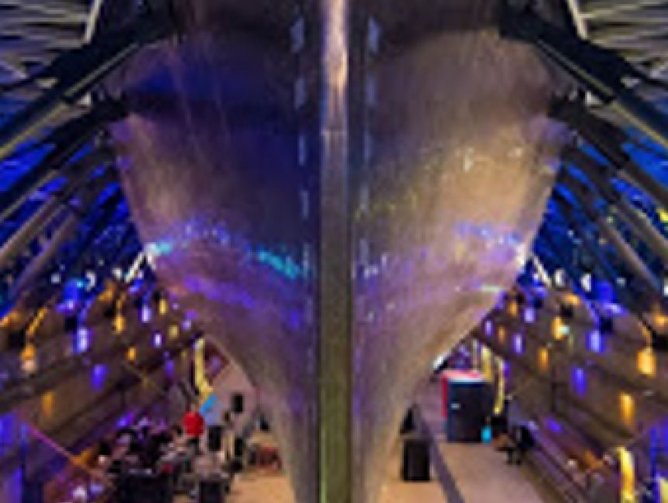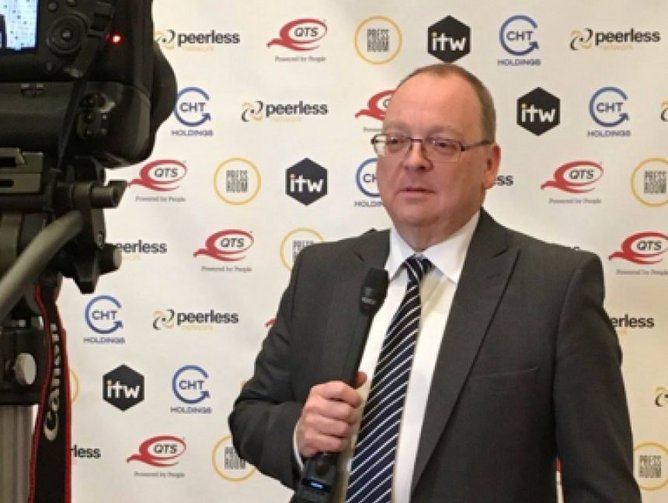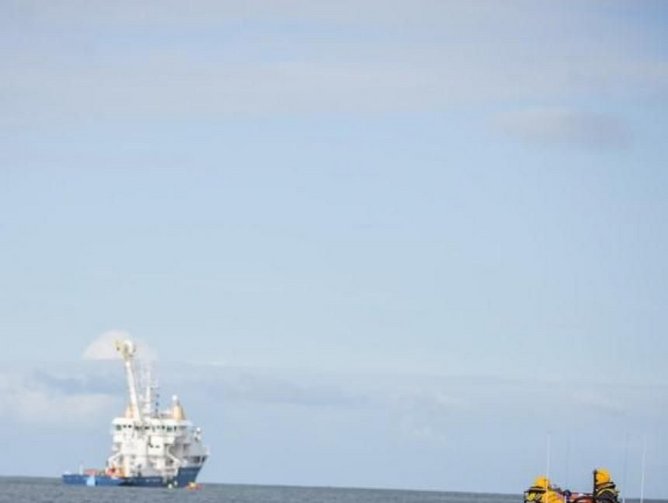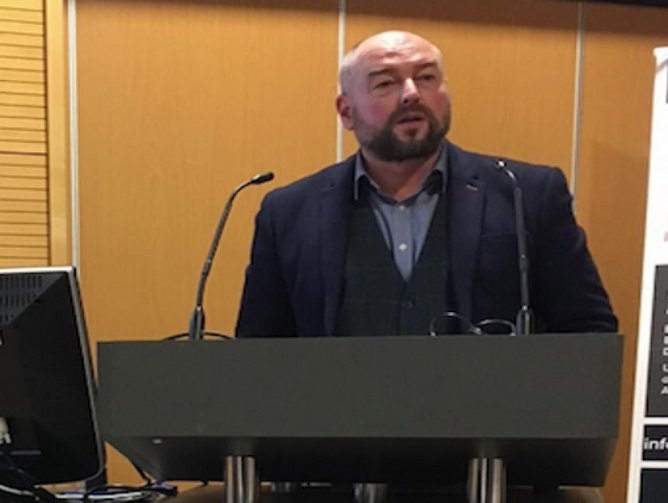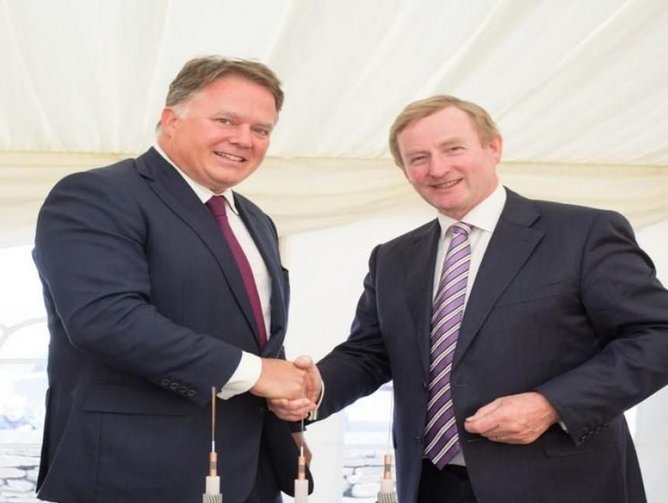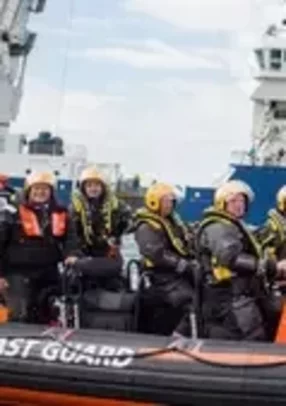Bridging the Atlantic: An interview with Aqua Comms CEO Nigel Bayliff
The telecoms industry has undergone something of a subsea revolution. Whilst subsea cables built 30 years ago were both expensive and time-consuming, they were also only built for telephone calls between corresponding operators on either side of the ocean.
The partnership of US operators such as AT&T, Sprint and Verizon, as well as European operators British Telecom, France Télécom, Deutsche Telekom and others enabled the development of subsea cables which could handle increased volume of calls.
However, with private entities deployed across the Atlantic, it was international provider Cable & Wireless which built a private cable to America in a bid to sell capacity to smaller operators emerging in Europe.
Providing a competitive threat to the pricing of telephone calls, the space for providers to privately build infrastructures and sell them in alignment with the life of the cable was born, and filtered into the development of the internet.
Impacting the way undersea cables are designed, the internet fuelled a consumer demand for connectivity. With an increased need to send low-speed data over a telephone call-style channel, the launch of 9.6kb dial-up modems created a crossover, where providers sought to turn a telephone-capable cable into a data cable.
Despite this, whilst the number of consortiums and telcos sought to build cables to cater to this rapid demand, the dot.com bubble burst and led to not only an oversupply, but a subsequent crash within the telecoms sector.
“There were competing organisations with brand new cables across the Atlantic and a market which had dwindled. Speculators came in and bought the assets, which had cost hundreds of millions to build, for just tens of millions,” explains Nigel Bayliff, Chief Executive Officer at Aqua Comms.
“Suddenly the private equity markets and the general banks lost a lot of money in that very strange period of history.
“Today, there remains a 20% price decline model used for the price of a particular piece of capacity in the Atlantic. At the same time, people have managed to stay in business because the growth that was forecasted in 1999 has started to occur,” he continues.
“At Aqua Comms, demands are roughly doubling every two years. There is a huge data flow now, many orders of magnitude bigger than they were 20 plus years ago.”
Infrastructure as a service (IaaS)
Established in 2011, Aqua Comms seeks to monetise undersea assets by taking capacity from one shore to the other side of the ocean, delivering high quality services at lower costs. With 20 employees with up to 25 years’ experience each, it presently houses up to 100 target customers, which are mostly global telecoms carriers.
“We don't sell to banks or engineering firms. Neither do we go into the enterprise layer and break up the capacity on our layer into smaller pieces,” says Bayliff. “We sell big, high-capacity pipes between major interconnections sites either side of the Atlantic to people who go out into the metros and the communities and supply consumers and enterprises with telecoms services.
“We operate as a carrier's carrier and sell, effectively, infrastructure as a service,” he adds. “Our investors are mostly infrastructure-grade and they are looking for a long-term return on the capital deployed, which is a pretty different world to 1999, when it was mostly private equity making a play on what might happen in the high-tech market.”
Spike in demand
Utilising new technologies proven by specialist construction companies, Bayliff’s extensive sector experience covers all aspects of the development of new, innovative solutions embedded into subsea cable systems.
Whilst the number of cables built around 2001 are now coming to the end of their economic life, the growing need for capacity is enabling Aqua Comms to lead the way in the subsea fibre-optic network industry.
“Cables which I built in the early 2000s are approximately four terabits (Tb) per fibre pair. Technology has changed dramatically, and our new cable can do at least 24 Tb per fibre pair at a lower operating cost,” acknowledges Bayliff. “The challenge is to cope with the massive growth of capacity requirements, but not to grow your costs at the same rate as the capacity growth, because the price is in decline.”
Upon joining Aqua Comms in late 2016, Bayliff has worked to monetise the company’s subsea fibre-optic cable, AEConnect, in the carrier market in both Europe and the US.
“We own two cables. One goes from western Ireland to New York (AEConnect), and one goes from Dublin to Holyhead in Wales, which was built about six years ago, called CeltixConnect-1,” notes Bayliff.
“We’re now in a phase where we've stabilised the company and paid back all the construction costs of that original cable.“
Enhanced design
In order to remain ahead of the competition, Aqua Comms has deployed significant investment in both the design of its cables, and what it can offer its customers.
Through its Spectrum Services, users are able to partake in ownership economics and technological improvements in end user equipment over the life of a particular cable.
“We sell 100 gigabits (GB). If you keep this for 10 years, it will be 100GB. Spectrum allows you to get underneath that layer and own part of the physical transmission bandwidth across the fibre and add new parts to that technology over the course of ownership,” says Bayliff.
“At the end of 10 years, that channel might be able to deliver 400GB because of improvements in technology. You start to see the benefit of a different grade of investment in the telecoms supply.
“Below that is the fibre pair, where you get the ability to put whatever you want on the end of it. There are lots of innovative companies, like Ciena, Infinera and Xtera. They are always coming up with new generations of Spectrum management capability and improving the capacity of each fibre pair as they go. So, you're latching into that ability when you buy Spectrum,” he continues.
The importance of speed has also been addressed. Previously, cables were at risk of the light becoming obscured across the route of the cable, creating errors in signal. This would also reduce the transmission bandwidth which could be utilised.
By implementing specialist types of fibre, the use of coherent detection now provides a cleaner way of detecting the signal on arrival at the receiving station, therefore removing the need for complex management.
“High-powered amplifiers boost the light signal, and the fibre is the same all the way across,” observes Bayliff. “It's a new design of a large effective area fibre optics, which provides increased power and bigger bandwidth.”
Furthermore, Aqua Comms has placed significant investment in its cable security, where its two biggest threats are fishing within shallow water areas, and also where ships anchor through its strengthened design.
HAVFRUE consortium
The company’s CeltixConnect-2 cable will seek to provide an additional secure route from Ireland and the UK in its bid to cater to a growing surge in demand. It will also link to its current subsea cable across the Irish sea, named CelixConnect-1.
“There are big carriers who have a lot of business in Ireland and want dark fibre so that they can operate their own network. Dark fibre is sold to big carriers or content players such as Facebook, Google, Amazon, Microsoft, etc,” explains Bayliff.
“Our second cable will also connect to the Isle of Man, so we will connect Dublin with Blackpool, and we'll also branch into the Isle of Man itself, bringing our services to the gaming and financial management companies.”
The company’s growing connection with the data centre and cloud market will accelerate business growth.
It’s decision to join the HAVFRUE consortium, a group which will bring a multitude of advantages for the business. The new cable will connect New Jersey and the US to Ireland and Denmark, with connectivity options in Norway. Once completed, Aqua Comms will own approximately a third of the cable’s capacity to market and sell capacity services.
“We are working with people who we know and who don't compete with us, because they buy capacity for their own private use,” observes Bayliff.
“The cable will branch into the west of Ireland and join up with our existing cable. Once completed, we will have fibre optic capability to deliver massive capacity. These fibres carry 20-plus Tb per fibre. We will be able to do that in a ring-based structure between Europe and Ireland, and Ireland and the US, which is a very resilient path for data-centred traffic and general telecoms traffic.
“This route is important, as it goes directly to Denmark, which means that these will be the two northern cables in the Atlantic,” he continues. “The cost to build them is prohibitive, unless you have a good market to off take that cost.”
“It’s also important to me as the north of Europe is cold and electricity is cheap. Those are two of the key design criteria for these mega scale data centres. Companies want low cost of electricity and as much natural cooling as possible. The third thing they need is connectivity.
“We really are aiming to connect the data centre and the cloud centres on either side of the Atlantic.”
“Ireland has the unique position because of its tax rate and its high-tech workforce. It has enormous data centres for Apple, Amazon, Microsoft, Google and Facebook already established. Connecting the three big places where data centres will develop over the next five years was a very good strategic move for us,” adds Bayliff.
“We can also enter Sweden and Finland and pull through traffic that comes up from Russia and China, which travels into Frankfurt. All of those northern European locations are where the traffic flows will come onto our cable and, obviously, help us monetise it.”
Remaining productive
Working with international companies, as well as smaller enterprises, has enabled Aqua Comms to build a strong, global network and close-knit relationships with its partners. Working with INOC in particular has seen the company eradicate any issues within its network operation centres (NOCs), where the company has put up walls up between Aqua Comms’ data and knowledge processes, which is kept in house.
“Our network operations process manager, who effectively commands what the NOC does, is the ex-process lead for Deutsche Telekom’s Global Network Factory, who was one of the industry's best deployment of electronic network management in Europe and, in fact, the world,” says Bayliff.
“Although the NOC has all the tools, they’re directed in how to do that by an internal resource. We have people in our company who can then provide second and third line technical assistance and direction to the vendor in the event of any serious or complex situation.
“It's a good partnership because INOC have a large operation in Madison, Wisconsin in America, but they're able to flex the resource they deploy on our account as and when we need it.”
Future trends
The subsea cable industry will continue to grow but, interestingly, Bayliff believes that dynamic services will be the ones to watch. Whilst streaming services such as Netflix will drive traffic across domestic networks, there are other areas of focus which will determine the need for data on a global scale.
“Services which will really drive connectivity will be interpersonal, dynamic, high-data services such as video calling. Video, WhatsApp, or posting a Facebook Live video uses significantly more capacity. It is a random event and there's two billion random users of Facebook who might all decide to do things at different times. The dynamism is very important and that's where we keep an eye on the trends,” observes Bayliff.
“Certain trends we are looking out for especially is augmented virtual reality (AVR). If you take video as being a unit of one, virtual reality (VR) is about 6.7 times the data rate. So, if you then go to AVR, you're another 10 times the data rate.”
Additionally, people’s assumptions that there remains enough capacity will need to be addressed long-term. Whilst in the 1990s there were constricted channels of bandwidth, and a lot of research undertaken in how to get increased richness of communication in the same bandwidth, this has since been eradicated.
“I receive between 15-17 megabits per second (Mbps) on my BT broadband, but on mobile I get 24 Mbps on Vodafone 4G. There's an assumption that it's effectively limitless and we won't need to bother, which means people will use more communications, which translates into more international bandwidth,” comments Bayliff.
Consequently, Aqua Comms will remain a specialist and focused company which will work to provide customers with access to IaaS at all levels for both carrier content and media industries.
“We are not a full-service telco, so we don’t try to sell to the same people as they sell to,” concludes Bayliff. “We're trying to provide the backbone and the North Atlantic bridge for data centre and cloud business growth over the next decade and beyond.”
